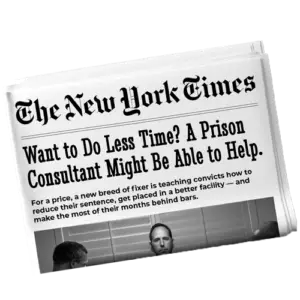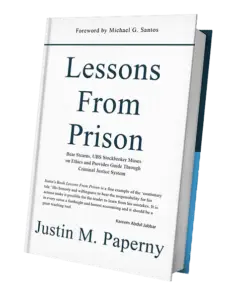(Click the Play button to listen to the whole podcast.)
A number of people on our weekly webinar are home from prison and they share the same frustrations. They talk about the labor market, the halfway house, and the limits on what they thought they’d be able to do. Many of them admit they regret how they spent their time inside. I can relate, because I was on the same track. When I first got to prison, I avoided problems, I did my job, and if I’m being honest, my adjustment was built almost entirely around exercise.
Back then there wasn’t the First Step Act or Second Chance Act. No incentives to shorten my time, no programs to accelerate release. I told myself, eighteen months, I’ll exercise, there isn’t much else to do. Then I saw men close to release. Instead of excitement, they were scared—scared about employment, scared about licensing, scared about supporting their families. That got my attention. I realized I wasn’t going to be any different.
The second moment came in Michael’s cubicle. I was three months in, bragging about how fast I was running and how many pull ups I could do. Michael looked at me and asked, half joking, “How much are people going to pay you to do those pull ups?” The answer was zero. That question, combined with seeing men afraid to go home, forced me to shift.
Michael introduced me to the U-shaped curve. The way he explained it stuck. Picture society above the U, prison below it. Everyone who comes in descends—you leave behind your family, your job, your normal life. It’s disorienting. My first months were filled with anxiety and separation. But eventually, I adjusted. I had my bunk, I knew my job, I knew how staff responded, I knew who to avoid. That’s the bottom of the U. In some ways, it’s the easiest stage.
The danger is staying there too long. Too many never climb back out. They coast. They fill their days with television, table games, endless complaining. Then release gets close, and all at once the mortgage, restitution, and jobs hit them. Panic sets in. Regret follows, because there’s no way to rewind.
I saw the worst version of it at the halfway house in Hollywood. A physician was working at KFC because it was the only job approved for him. He told me, without hesitation, “I wish I was back in prison.” Looking back at how he spent his time, it made sense. He never moved off the bottom of the U. He never stopped blaming others. He never began the climb back up.
That’s what the U-shaped curve explains: everyone descends, but not everyone prepares to ascend. If you start building at the bottom, you carry less fear when release comes. For me, that meant cutting my exercise from six hours to two, starting to write, working with Michael on a book, writing to my probation officer, lining up job prospects, and setting a course I could follow every day.
I still had anxiety about release—everyone does—but I felt grounded because I had evidence of progress. If I had done nothing but exercise, I would have left prison unprepared, like too many others. That’s the trap of the U-shaped curve.
The lesson is simple. If you descend into prison with no plan, you risk getting stuck at the bottom. If you use that time to create, you give yourself a chance to climb out stronger. Judges, probation officers, and case managers won’t take your word for it. They look for a documented record and so will your family. The U-shaped curve is real. The question is whether you’ll get stuck at the bottom, or start preparing to rise.
Justin Paperny



